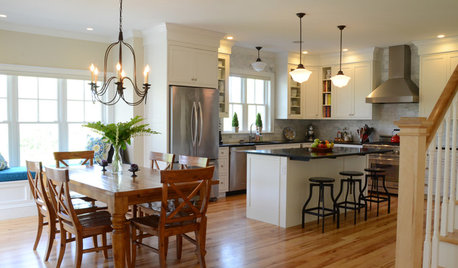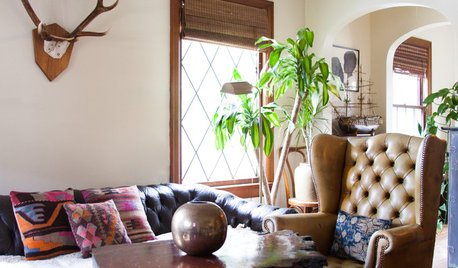Question about 400watts and 600 watts
collegegrower
16 years ago
Related Stories

GREEN DECORATING8 Questions to Help You See Through Green Hype
With the ecofriendly bandwagon picking up some dubious passengers, here's how to tell truly green products and services from the imposters
Full Story
LIGHTING5 Questions to Ask for the Best Room Lighting
Get your overhead, task and accent lighting right for decorative beauty, less eyestrain and a focus exactly where you want
Full Story
DOORS5 Questions to Ask Before Installing a Barn Door
Find out whether that barn door you love is the right solution for your space
Full Story
GREEN BUILDINGWhat's LEED All About, Anyway?
If you're looking for a sustainable, energy-efficient home, look into LEED certification. Learn about the program and its rating system here
Full Story
GREEN BUILDINGLet’s Clear Up Some Confusion About Solar Panels
Different panel types do different things. If you want solar energy for your home, get the basics here first
Full Story
LIGHTINGWhat to Know About Switching to LED Lightbulbs
If you’ve been thinking about changing over to LEDs but aren't sure how to do it and which to buy, this story is for you
Full Story
MATERIALSInsulation Basics: What to Know About Spray Foam
Learn what exactly spray foam is, the pros and cons of using it and why you shouldn’t mess around with installation
Full Story
BUDGETING YOUR PROJECTHouzz Call: What Did Your Kitchen Renovation Teach You About Budgeting?
Cost is often the biggest shocker in a home renovation project. Share your wisdom to help your fellow Houzzers
Full Story
KITCHEN DESIGNA Cook’s 6 Tips for Buying Kitchen Appliances
An avid home chef answers tricky questions about choosing the right oven, stovetop, vent hood and more
Full Story
HOUZZ TOURSMy Houzz: Vintage Furnishings With Stories to Match
A photographer and a musician make their 600-square-foot Seattle apartment their home with carefully curated secondhand finds
Full Story





cobretti
lermer
Related Professionals
Edmond Landscape Contractors · Canton Landscape Contractors · Huntington Landscape Contractors · Mason Landscape Contractors · Milton Landscape Contractors · Pompano Beach Landscape Contractors · Rio Linda Landscape Contractors · Thonotosassa Landscape Contractors · View Park-Windsor Hills Landscape Contractors · Carney Fence Contractors · Collierville Fence Contractors · Gresham Fence Contractors · Lakewood Fence Contractors · Skokie Fence Contractors · West Sacramento Fence Contractorsshrubs_n_bulbs
lermer
shrubs_n_bulbs
collegegrowerOriginal Author
lermer
shrubs_n_bulbs
dcarch7 d c f l a s h 7 @ y a h o o . c o m
shrubs_n_bulbs
lermer
shrubs_n_bulbs